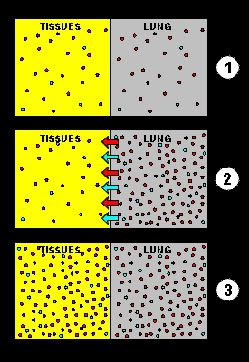- Messages
- 93,360
- Reaction score
- 91,530
- Location
- On the Fun Side of Trump's Wall
- # of dives
- 2500 - 4999
Thakyou for the responses so far.
So i guess the quick answer is no?
Is it because there is a certain depth where u are still on gassing faster than off gassing? cause i did notice the part in nereas's Vplanner profile where it says ""offgassing starts at 97.1ft"" for that particular profile.
The quick answer is no.
The answer to your second question is "it depends". Nereas's V-planner profile is nothing more than the solution to a set of equations that may or may not have much to do with your particular decompression needs.
The thing you have to understand about decompression is that (a) it's a complex subject (which is why nobody's ever come up with an easily comprehensible treatise on the topic) and (b) an accurate explanation does not lend itself well to internet forums. But I will try to provide a simplified explanation that may answer your question.
First, let's start with some basic statments.
1. All liquids contain within them a certain amount of dissolved gases.
2. The amount of dissolved gases any given liquid will hold is impacted by pressure.
3. In this respect our body acts like a liquid.
So let's look at what pressure does to us when we dive.
At the surface, our body is effectively "saturated" with dissolved gases ... meaning that it contains all that it's designed to hold in solution. When we dive, increased pressure increases the amount of gas our body tissues will hold ... the deeper we dive, the greater the amount until those tissues once again become saturated and won't dissolve any more. And so our body takes in more gas from the air we breathe.
Furthermore, because we're breathing pressurized gas, the deeper we go the denser the gas we're breathing. This denser gas creates a "differential" between the pressure of the dissolved gas in our body and the pressure of the inhaled gas in our lungs. Think about our lungs and body as two "containers", separated by a permeable membrane that allows equalization to take place over time ... as illustrated in this diagram ...

When we begin our ascent, the reverse process takes place. Now, as you can envision from this analogy, coming up slowly creates a very tiny pressure differential, which slows the offgassing process. It is primarily for this reason that the answer to your initial question is "no". But that is not the only reason.
Decompression is further complicated by the fact that our body comprises literally hundreds of different "tissue" types ... blood, nerves, muscle, fat, bone, ligaments, etc. ... each of which ongasses and offgasses at different rates. At any given time or depth during the dive, some of these tissues may be saturated while others will not be. Those latter tissues will continue ongassing on a slow ascent, even while the saturated ones may begin offgassing.
In order to make the process of tracking decompression manageable, what a program like V-Planner does is to group certain types of tissues into what they call "compartments" and track what each compartment would theoretically be doing, based on a set of assumptions about ongassing and offgassing rates. Up to a certain point during the ascent, certain "compartments" will still be ongassing while others will be offgassing. Your ascent rate plays an important role in the equations that determine which "compartments" will be doing which.
In reality, what your body is actually doing will approximate those assumptions, but not precisely ... there's too many variables, based on your physical makeup, the condition of your circulatory system, and even such things as how rested you are or what you drank before the dive. The program knows nothing about those things. Therefore following a program without understanding the assumptions and how your particular risk factors might affect them is risky ... that's why training is so important. In decompression programs, you accommodate your particular risk factors by adding or subtracting "conservatism" levels, which add or reduce decompression stop times accordingly. In nereas's example, he has his conservatism level set to +3 ... but without explaining to you why he does that, the numbers won't really be useful, because your body may not be much like his.
Hope that helps a little ... those references rstofer provided are worth reading if you really want to understand the subject better.
... Bob (Grateful Diver)





